I spent a lot of time travelling through Rajasthan, Agra and Varanasi in the winter of 2012-13. In some visits, the focus was all-round photography in the city and in some occasions we wandered the streets aimlessly, holding a camera. Here is a collection of images from the streets, taken during these and earlier visits.
—
The narrow lanes adjoining the ghats in Varanasi offer unlimited street photography opportunities. A part of people’s lives here is lived outside four walls, and they are more often than not happy to share their way of life with strangers. Shops and working spaces in the lanes have an amazing diversity that is perhaps not seen anywhere else in the world in such a small place. Sweet shops, silk handlooms that work in very tiny spaces where you can barely step in, vendors on bicycles crisscrossing the tiny spaces, chai shops, guesthouses, grocery stores, lassi shops, statue-makers,… the list is endless.
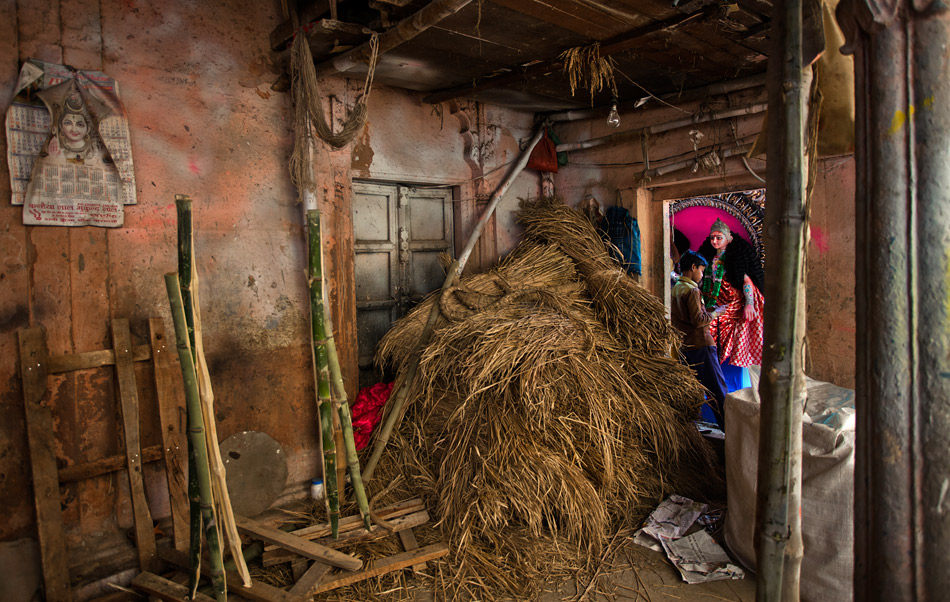
A goddess in the making..
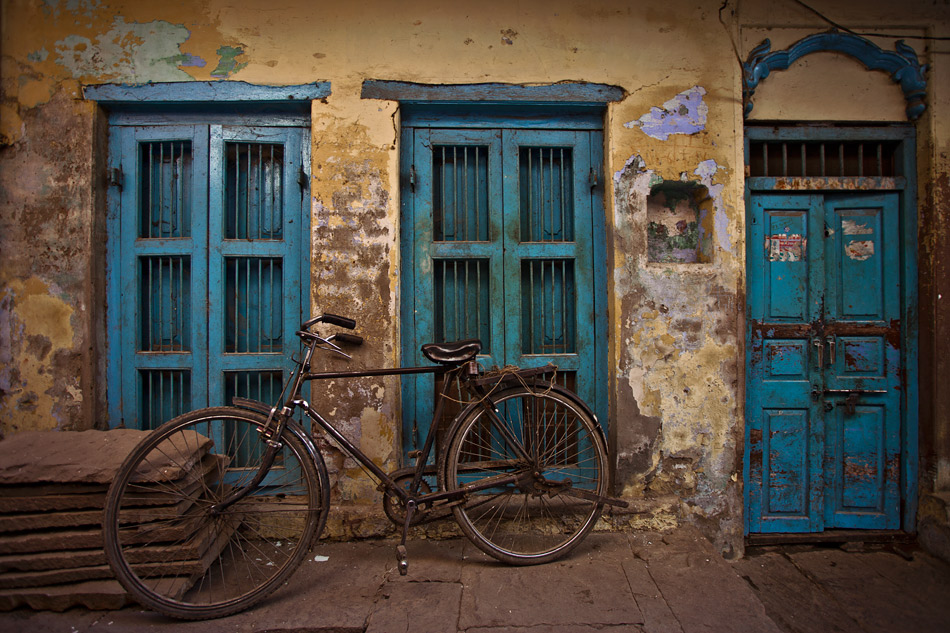
Aging wheels and an aging wall. Bicycles are a convenient tool for crisscrossing the incredibly busy traffic and constrained spaces of Varanasi.
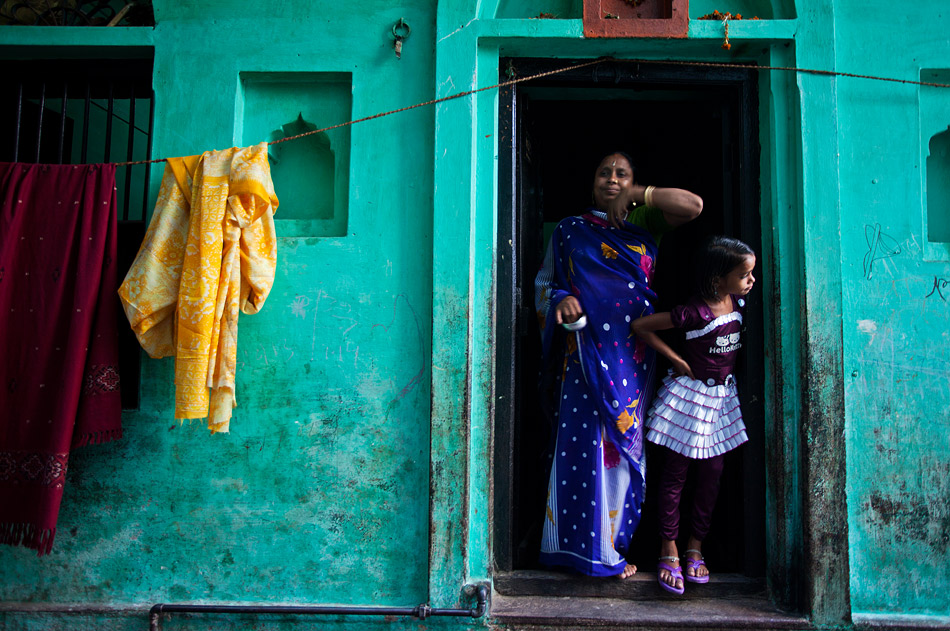
Time to go to school, but friends have not yet arrived..
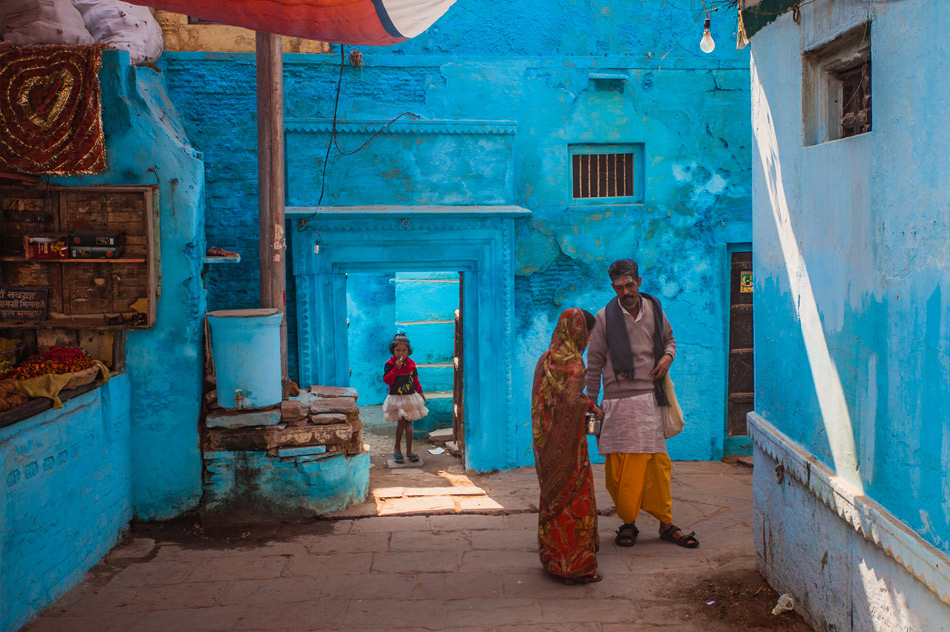
Shy, curious..
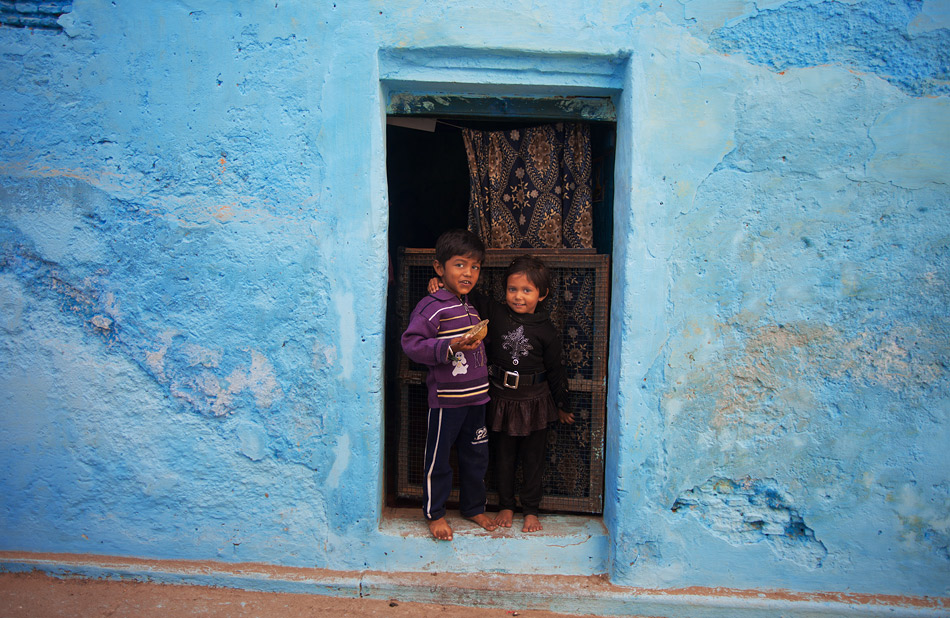
Shy, happy..
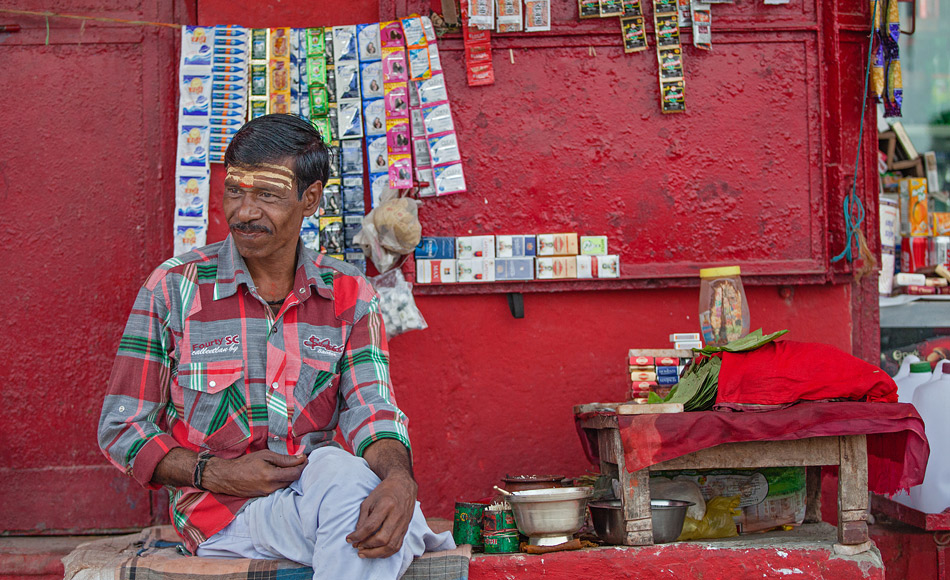
Red! lips, shirt and the wall..

Every second shop in Varanasi seems to specialize in some eatables. Savouries, tea, lassi,..
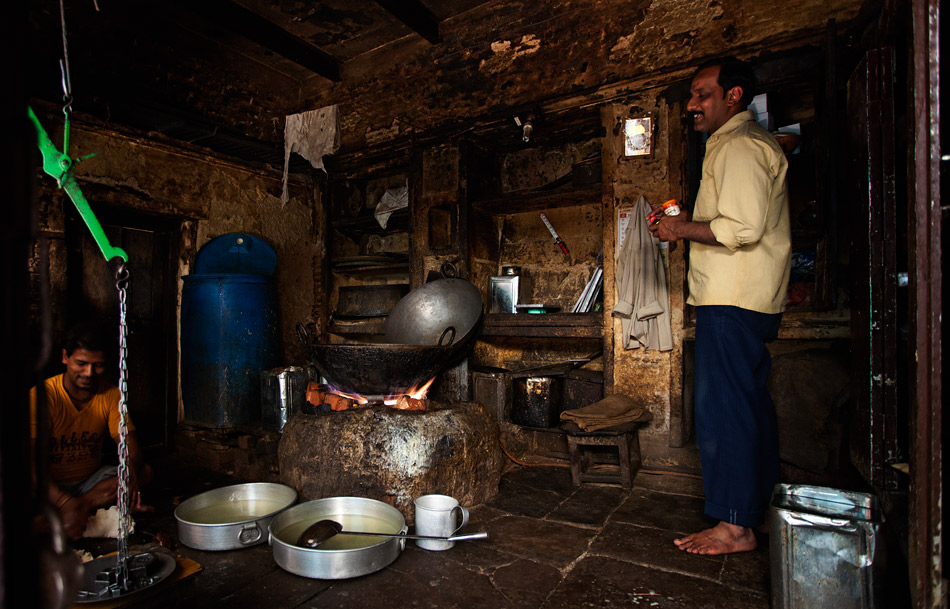
Smiles laced with sugary stuff..
While the diversity of Varanasi seems to be confined to narrow patch of a few kilometers length, the entire state opens up to myriad possibilities in Rajasthan. The old never seems to fade though the new continuously attempts to change the system. In Jaipur, the old city area still mirrors much of its past – its pink facades, turbans, big moustaches, old temples and monuments haven’t yet lost there space to tall glass facades.

Life outside the famous Hawa Mahal, Jaipur. The means of mobility may have changed, but the commotion we see today is perhaps the same that queens witnessed from the windows of Hawa Mahal once.
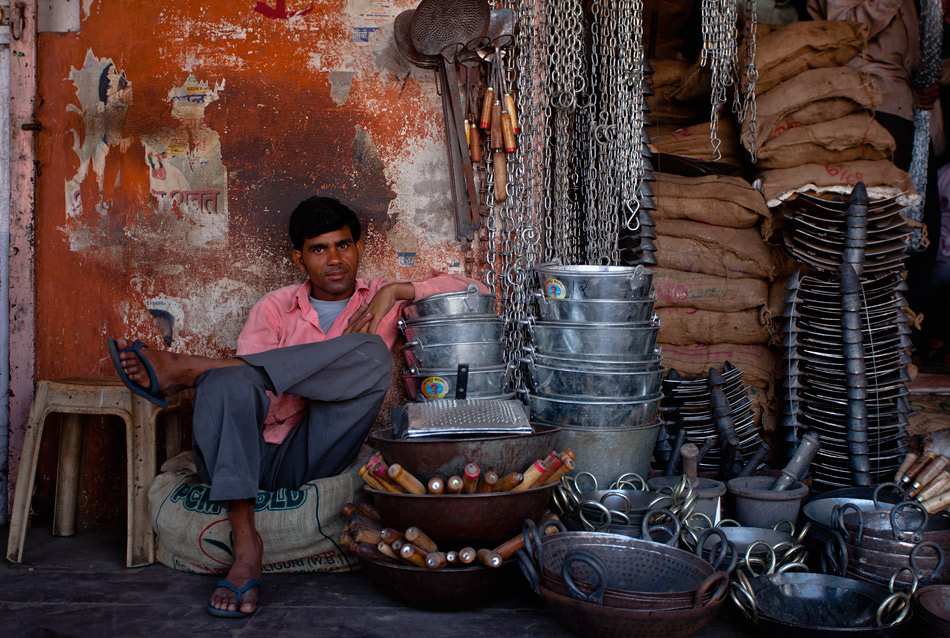
Undecided! Do I smile.. or not? A hardware shop in Jaipur’s old city.
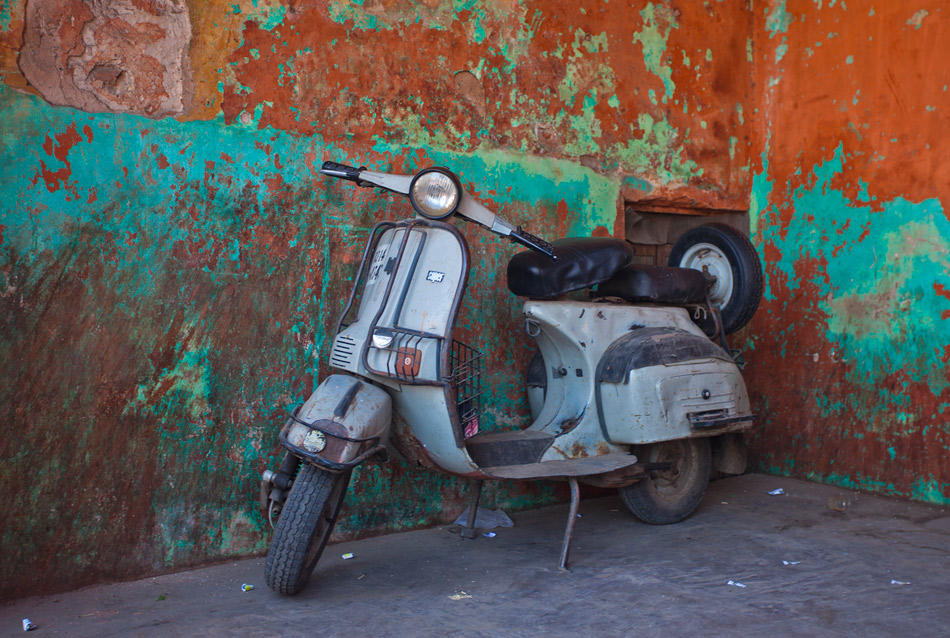
The scooters, once believed to be extinct! Now, the old ones are being brought back on the road and new releases are coming out from factories as well. A case of classics. Photographed somewhere not too faraway from the hardware shop above.

Jaipur’s fetish with pigeons may not be as legendary as its forts and palaces. But it should be. Everyone, everywhere wants to feed them and see them proliferate.
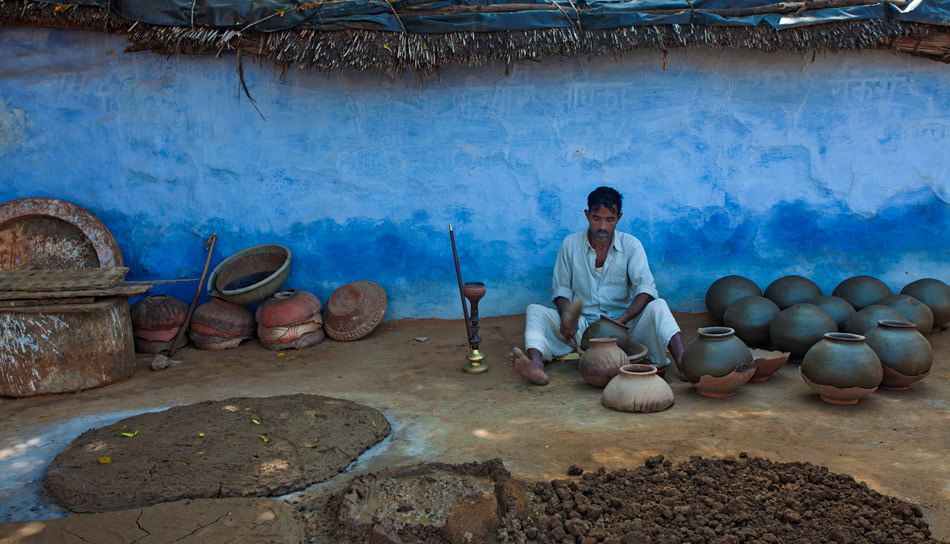
Somewhere on the way from Jaipur to Agra, mud pots still rule over steel utensils.

..and the good old tailors are preferred over ready-to-wear stuff.
Delhi’s Chandni Chowk is another area where, similar to Varanasi, a small place is home to amazing diversity. Ever heard of anything you wanted that is not available in Chandni Chowk?
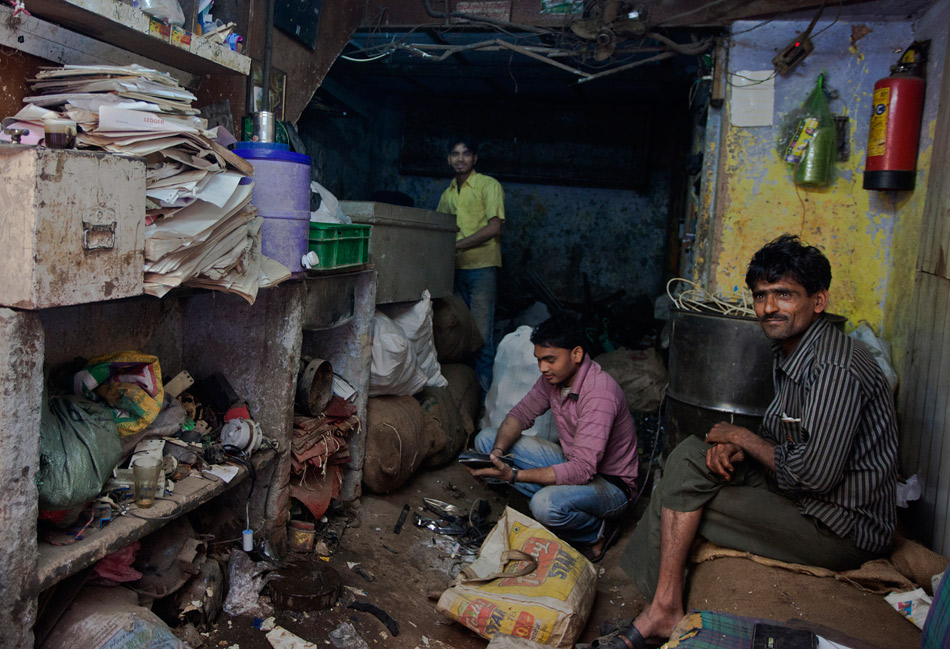
A scrap yard.. Everything can be recycled.
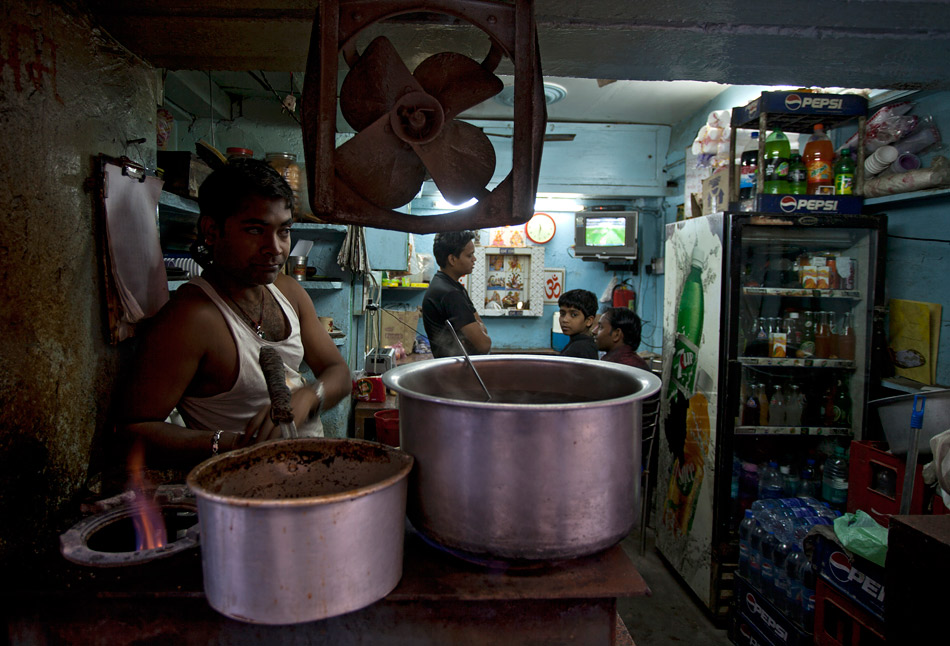
I usually make two visits to Hampi every year. If there is one thing that I necessarily look forward to during every visit, it is the climb to Matanga Parvata to watch sunrise over the landscapes of this ancient city.
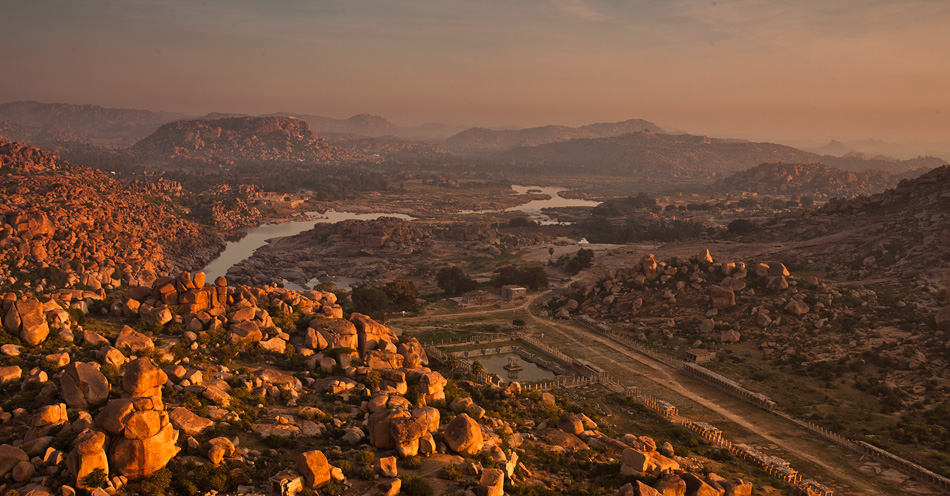
Matanga is perhaps the tallest hill in Hampi, on the right bank of Tungabhadra River. From the vantage point on the top, the sun rising over a misty landscape during the winter months highlights a wave of ridges that line up the eastern sky. As the big blob of light moves well above the hills, the golden lights sparkle on the smooth surface of the boulders littering the landscape. Tungabhadra shines in the skylight, with occasional coracles moving up and down on its calm surface.
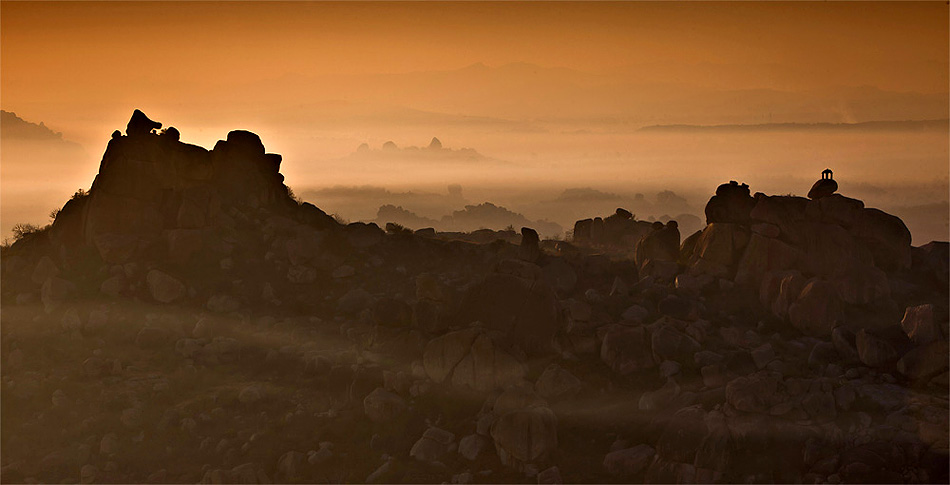
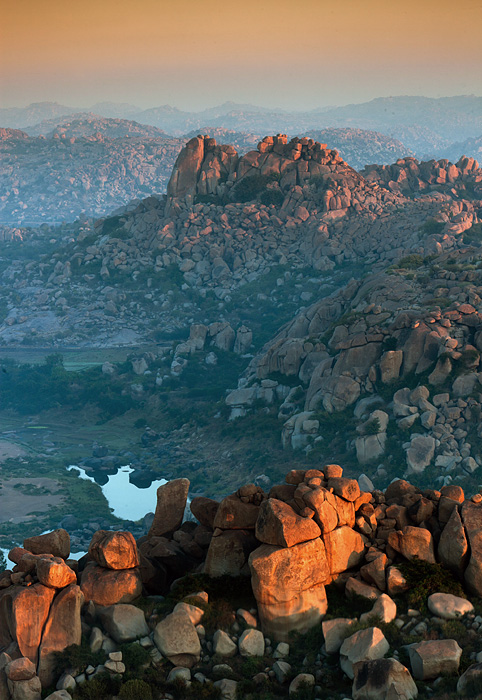
The steep fall of Matanga towards the east offers a bird’s-eye view of Achutaraya Temple right below and an uninterrupted view of the sunrise above. On the western side of the hill, the tall spire of Virupaksha Temple appears to challenge Matanga in its height. All around, remains of the erstwhile Vijayanagar Kingdom – Vijaya Vithala Temple, Krishna Temple, Lotus Mahal and several mantapas offer insights to the city’s past.
A little downstream, on the other side of the river, is Anjanadri Hill – a place of many legends. While Hampi’s hills are often credited to be the place where the kingdom of monkeys from Ramayana once existed, Anjanadri is known as the place where Hanumantha was born. The hill now houses a hoard of monkeys that usually settle around an Anjaneya Temple, as if to prove a point.
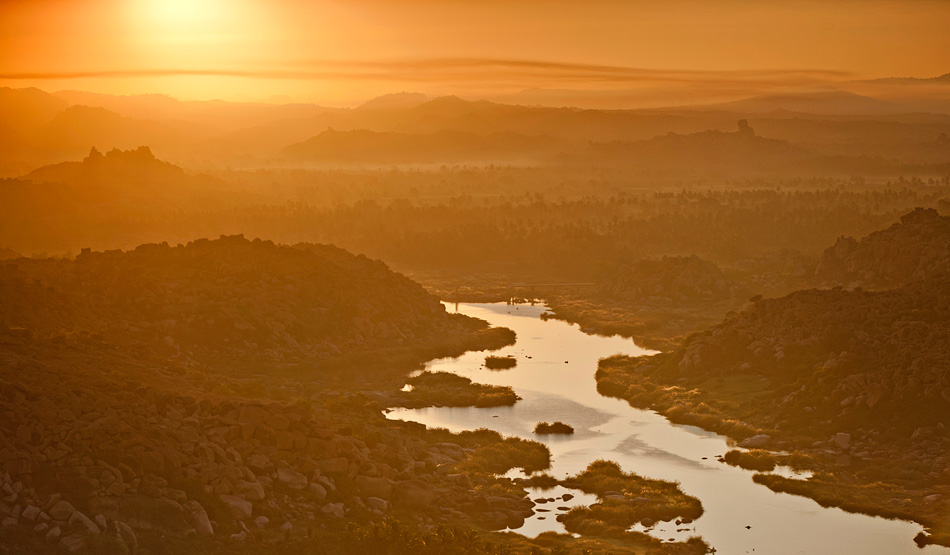
While Matanga is the highest point on the right bank, the Anjanadri probably takes the honour on the left bank. Near the base of Anjanadri, the river takes a steep turn from its northwardly flow to east, which allows a line-of-the-river view of sunrise from the hill top. In the winter months, the morning landscapes over the river appear bathed in gold – a spectacle that stays in the heart as permanently as it does in the camera.
In the recent past, I have been fascinated by the diversity of occupations that people around us practice. Knowingly and unknowingly, I have been photographing occupations for some time now, not always classifying and photographing because they are occupations but merely due to aesthetic value of what is unfolding next to me.
Here is a collection of images of people at their work.
One of my favourite subjects for photography is chai-shops and dhabas. You will find one not too far from you, no matter where you go. And each one has its own character. Some, like the one below, are open spaces that are quickly converted into a shop using nothing more than a stove and a bunch of utensils assembled over a pile of stones. And there are some that are built with make shift walls that could merely be a set of plastic sheets. They come in several different versions as well, like the mobile ones on a push-cart or the one that I saw built from the remains of an ancient truck.
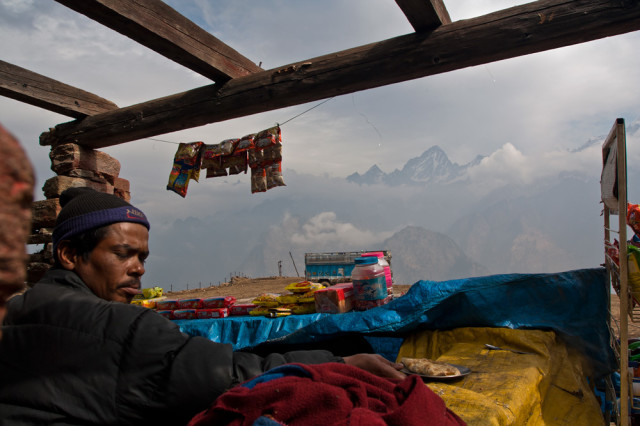
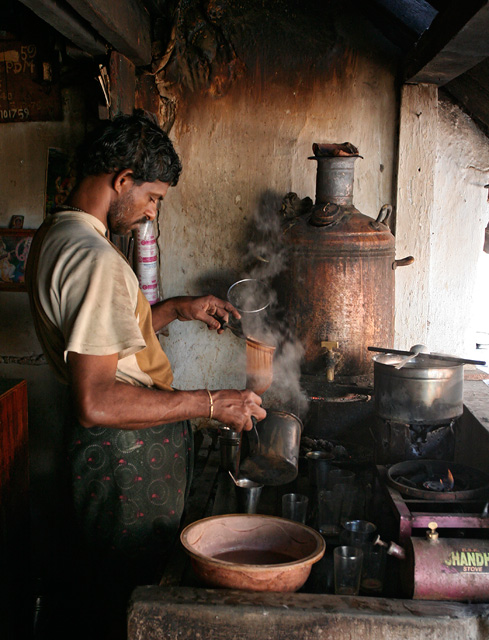
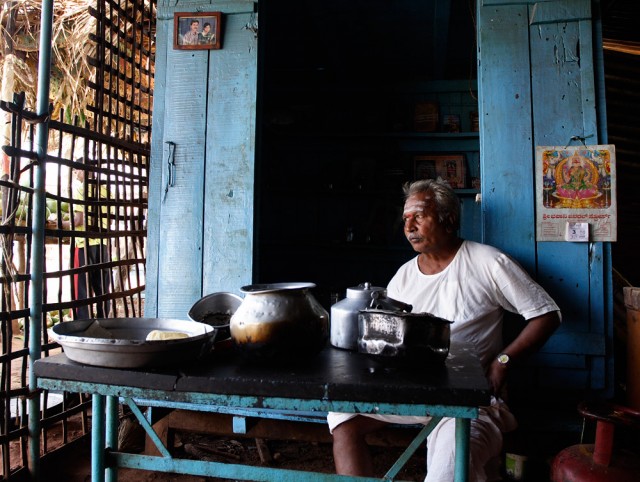
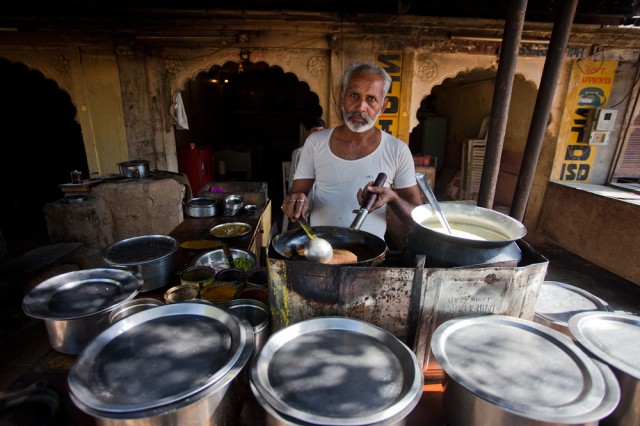
We are a nation of retailers. If the numbers that I got to read subsequent to the recent announcement on FDI in retail are to be believed, we have more than a crore retailers in the country. To see the amazing variety of things that people sell, one should visit an old-worldsy market in any of our cities. They are usually hidden away from the arterial roads that may showcase swanky malls. These are the places where your mom may go to buy vegetables or your uncle may get supplies for his small business.
Some times I tend to think that the tough jobs are not just the ones that require lot of physical or mental activity, but also the ones that require a lot of waiting, like waiting for a customers, a job that every retailer will have to do except a few lucky ones who may be always busy serving the customers.
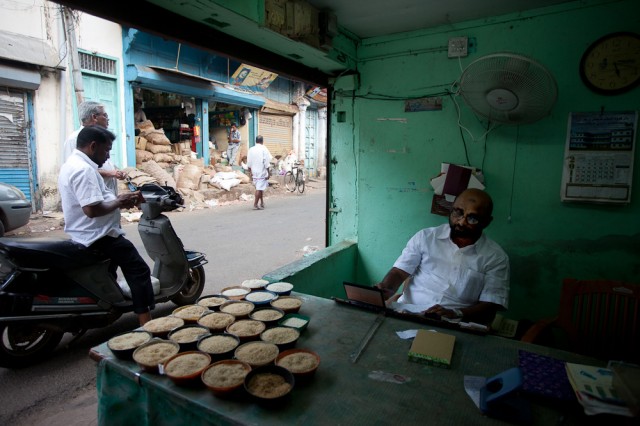
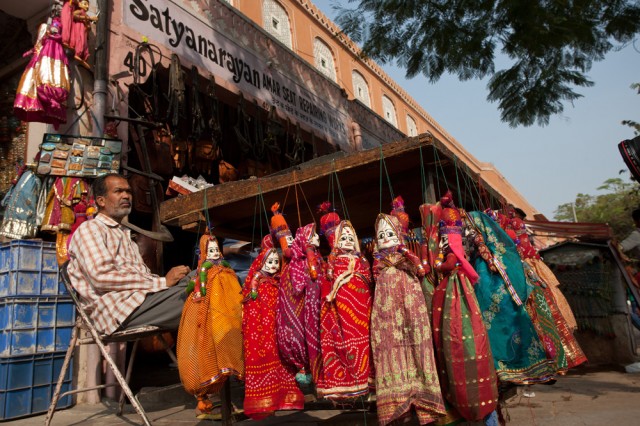
A large population in India, perhaps seconded only by agriculture, is supported by small business. A statistic puts the number at a fourth of the country’s population. Small, home businesses and industries like the one below–a setup for extracting silk yarn from cocoons–are often threatened by automation and industrialization. Yet, many survive. This silk yarn unit is one of the survivors in business, while many such units near Bangalore have closed down. But industries like pottery have survived in the absence of a prolific industrialized alternative.
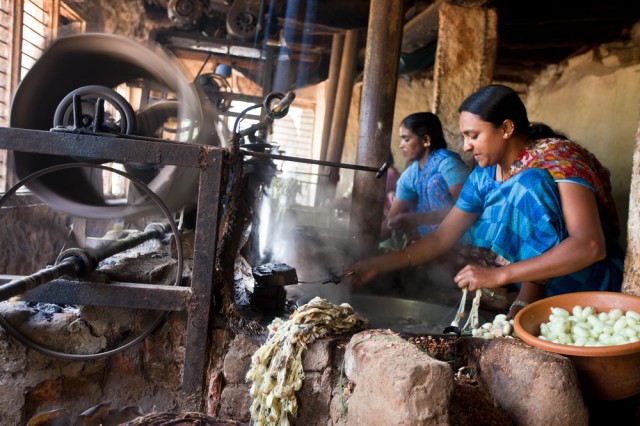
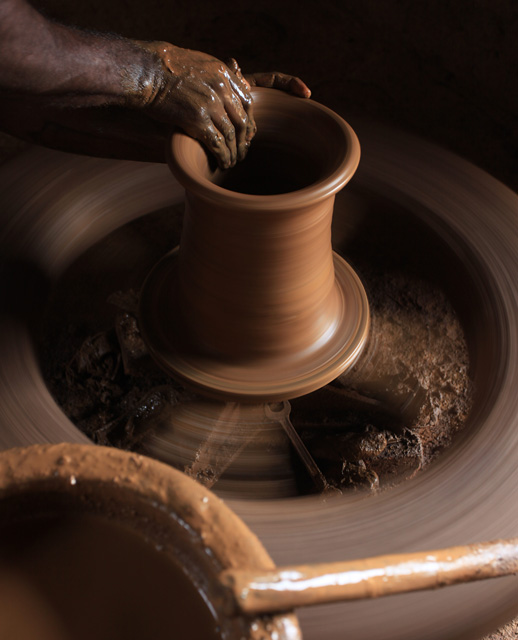
In places near water bodies, lives and earnings of people living nearby depends a lot on water. Perhaps fishing, transportation on water and tourism account for much of the direct income from water bodie. It is interesting to see the diverse ways that people employ for catching fish. Throwing a net by hand, using powerful trawlers and angling are some of the ways. The Chinese fishing nets are a unique fishing style that was once popular in Kerala, though a few nets have remained in use today.
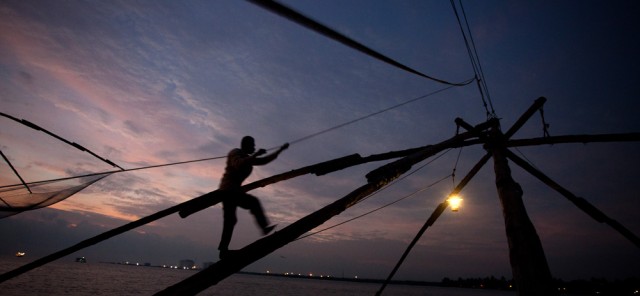
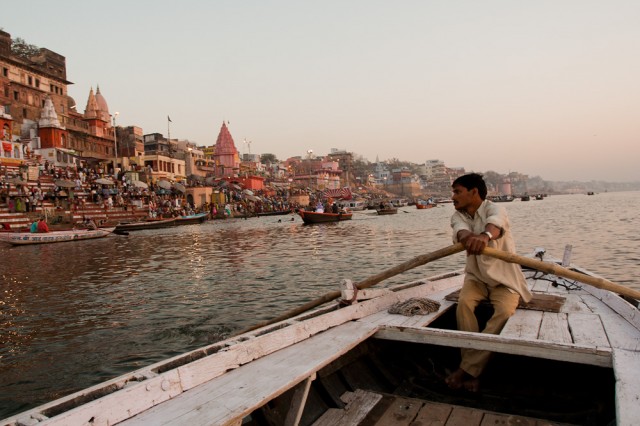

There are some jobs that are very unique, practiced by perhaps no more than a few hundred people in the entire world. The work of a mahout is one such, practiced only by a small population in India and another handful in rest of Asia. While only a mahout can tell how enjoyable his or her work is, it sure is a pleasure to watch these beautiful pachyderms being tended.
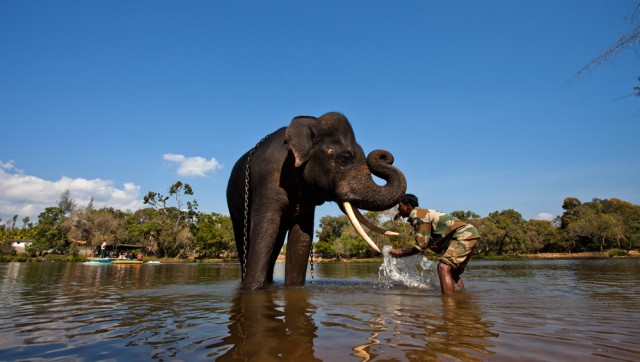
Sometimes I am fascinated by the way some very enjoyable jobs loose their original purpose to paperwork (this is only my prejudice and need not be taken as a fact). A school principal’s work, for example, is primarily to help his/her pupil learn. But I think in most occasions, a school principal is likely to be immersed in truck loads of administrative activities or paperwork, leaving very little time for teaching kids. This image below was shot on assignment for a school near Bangalore. My brief was to get a profile image of the principal for the school’d marketing material, at her desk in her room. The school administration wasn’t happy about a photograph that was taken by another photographer earlier. After I took the customary profile image, which they were happy with, I told them this can be done differently knowing the purpose for which the image will be used. I took the principal out of her desk, got her to an amphitheater and surrounded her with the kids from preschool. Here is the result for you to see.
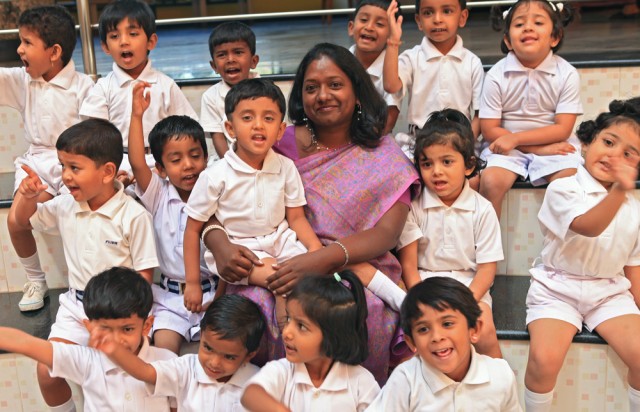
Some jobs are truly sacred. Like that of doctors who save life, who often spend long hours working simply because someone else’s life depends on it. I photographed these doctors on assignment for a media firm that managed public relations of a semi-government organization. These doctors had arrived from the city to a government sponsored camp, where some critical care was provided to people who could not afford it.
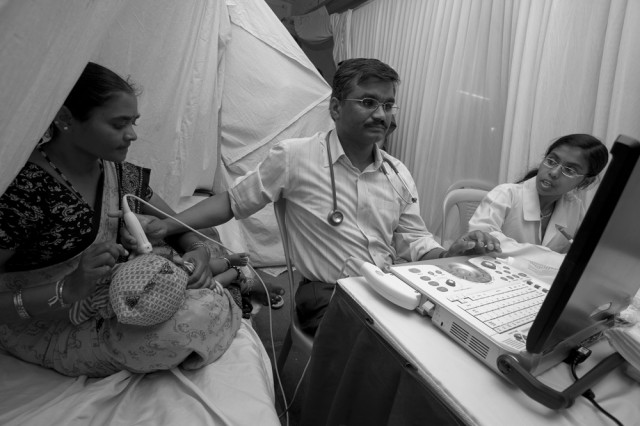
I have always wondered on the large increase of the number of people employed as security officers in the last decade. Fifteen years ago, I don’t think we used to see a large number of private security personnel in blue uniforms everywhere. But today, every building seems to employ a large number of them. This lady, however, wasn’t a private security guard, but a government servant employed by the archaeological survey of India. What struck me and prompted me to make this image was the contrast between the colour of her bright uniform and the surroundings.
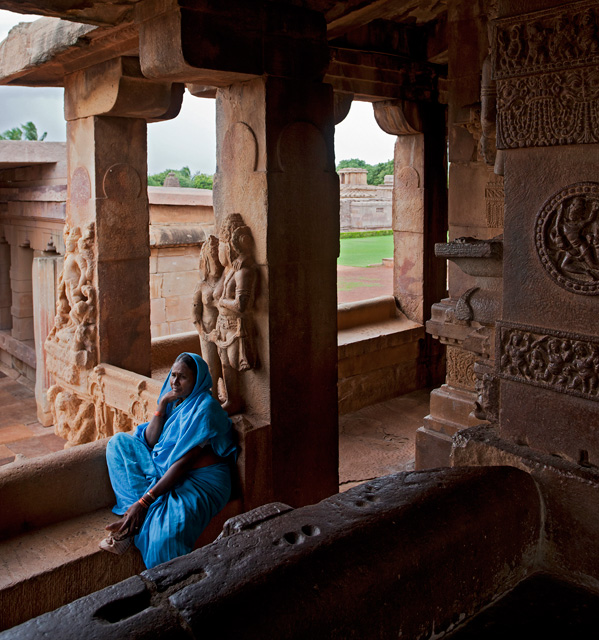
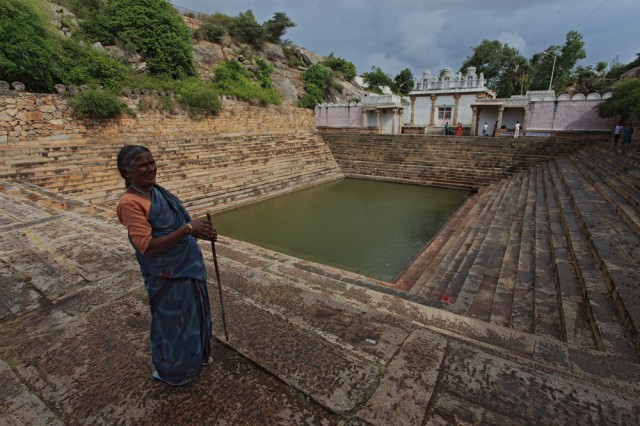
The task of a porter in the Indian Himalayas is a tough one. These people carry unusually heavy packs really high up the mountains, often in forbidding weathers and poor oxygen level. Yet, they seem to do it effortlessly and tirelessly, remaining active and cheerful even after the end of a long day of hiking. These porters, who were walking on a frozen river and carried the luggage of trekkers were subjected to a particularly difficult task. Even though they managed to put the luggage on a sledge and pull it along, they had to lift it on their shoulders where the ice surface was broken, while they climbed steep rocks in bitter cold. They were so capable, sometimes they even carried the trekkers on their back as they walked in frigid waters where the ice was broken, thus helping the visitors stay dry.
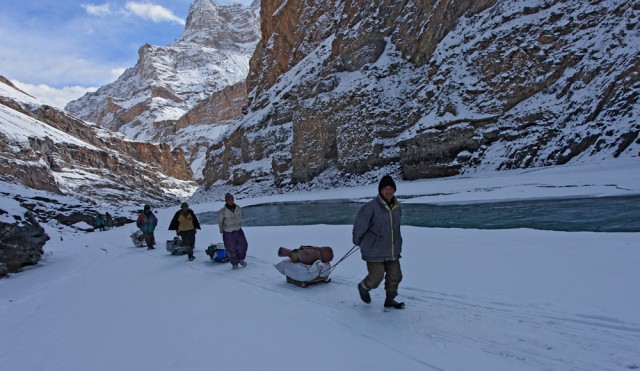
Shepherding is an occupation that we see across the country, from the deserts in Rajasthan to mountains of Kashmir. The variety of sheep that survives in these places and the purpose for which the sheep are reared can be different. The pashmeena goats found in the mountains are highly coveted for wool used in making expensive shawls.
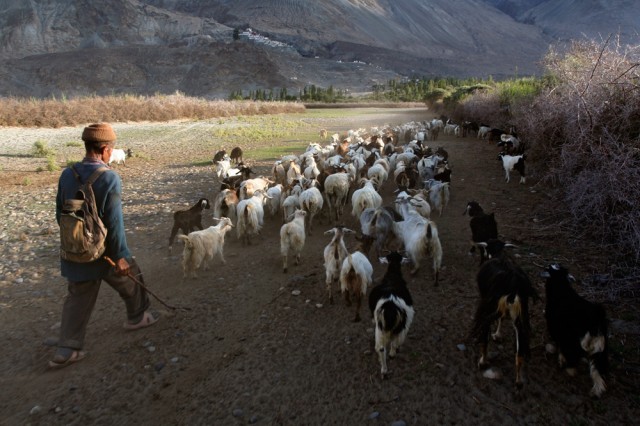
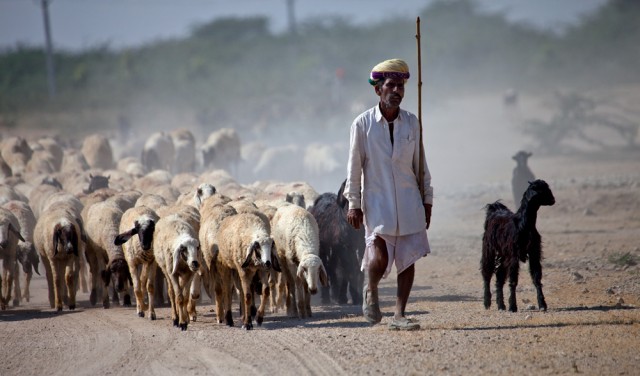
Naturally, I have captured many images of people in my own profession – photography. It is a coveted line of work that a lot of people would love to get into. And for a valid reason – if you are well established, it is a work that takes you places and is a profession that is highly respected. As with any work that has a lot of excitement, it also comes with its share of difficulties. Photographers often have to work at unearthly hours in search of the right weather and lighting. Some genres of photography, due to the nature of preparation required, may have photographers working for very long hours and still has an element of unpredictability to it.

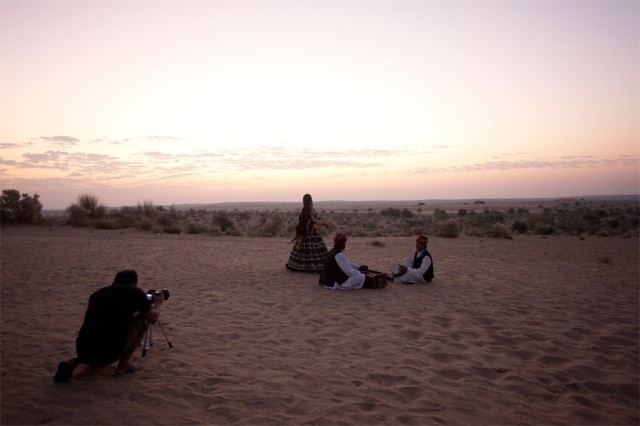
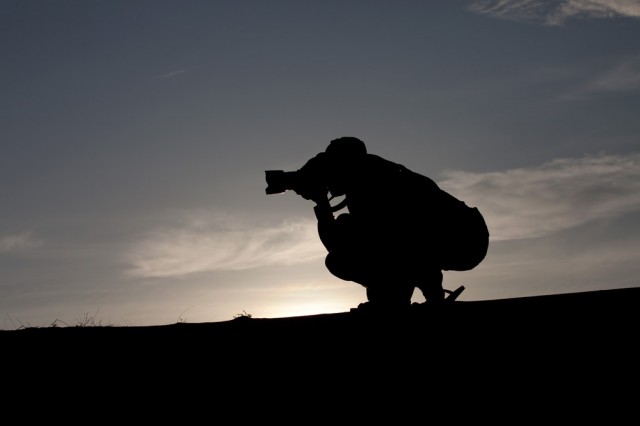
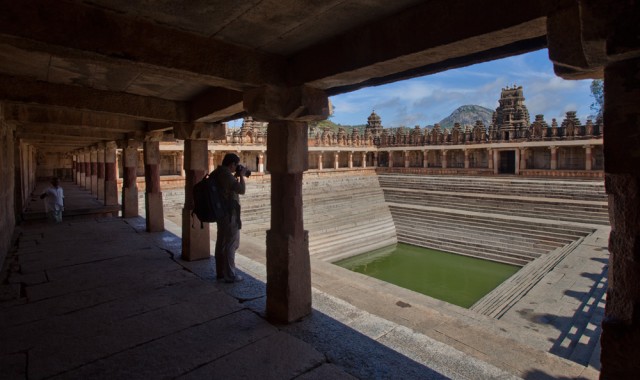
Like photographers, dancers fall under a broad genre of people whose work is considered art. These kalbelia dancers in the deserts of Rajasthan excel in their work and art, entertaining people who visit these desert lands. Kathakali (subsequent images) is a traditional performing art from Kerala, which involves people wearing rich colours and costumes to enact the stories from Mahabharatha. These artists are going through a long session of preparing for the show, which can be a more elaborate and time consuming process than the performance itself.
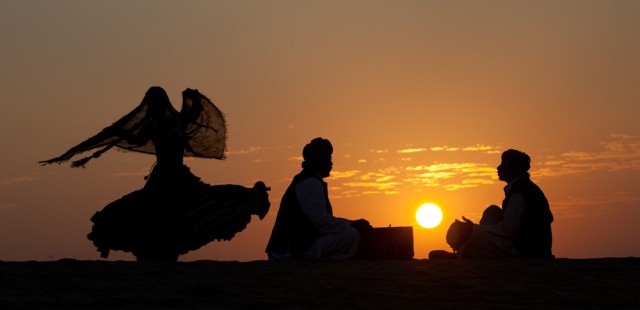
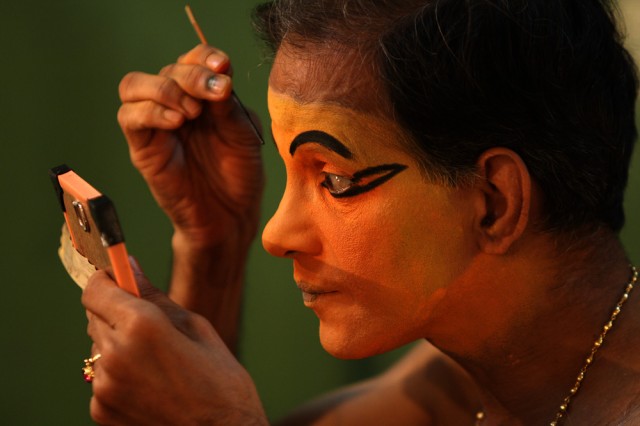
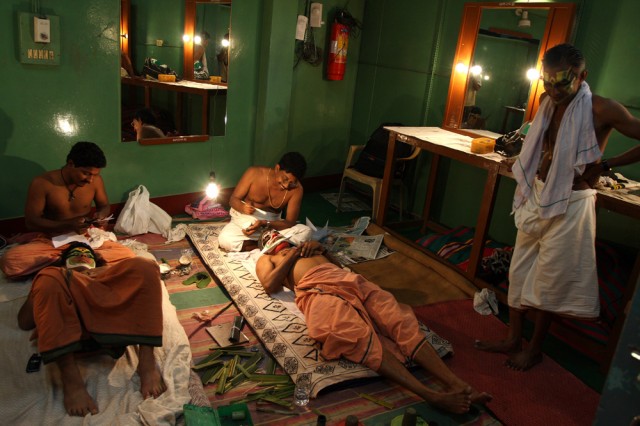
Out streets are always busy and filled with people who are engaged in some work or other, be it getting someplace, transporting goods from place to place or hawking to other people who are already busy on the road. There is a never an empty and dull moment on the streets of India’s cities.
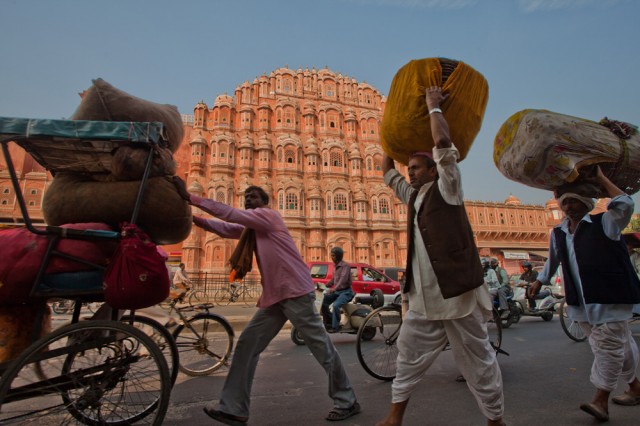
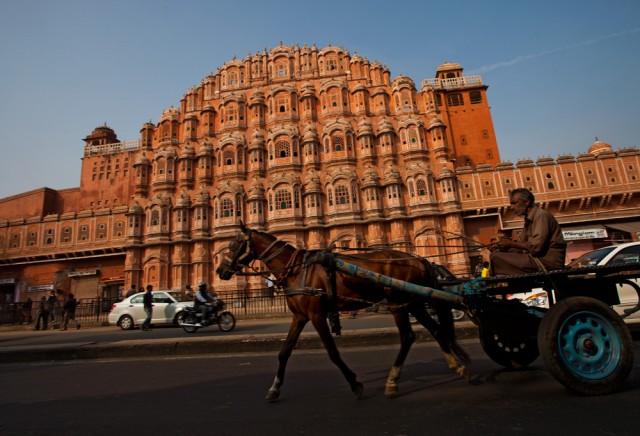
One of the crucial jobs that is important for everyone’s well-being is the task of keeping our habitat clean. Here is a person sweeping the colourful ghats of Varanasi.
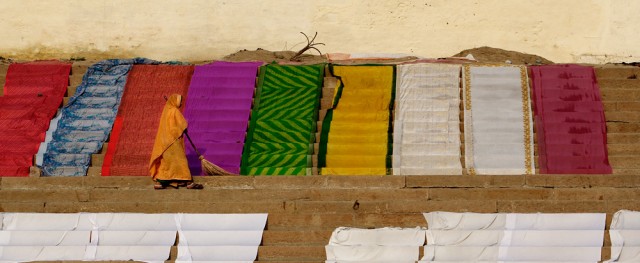
The work of camel drivers in the deserts of Rajasthan is seasonal. Come winter, they decorate their camel and hangout near sand dunes looking for tourists who want to go on a camel ride. The competition is fierce, and it takes a lot of waiting and a lot of coaxing the customers to get them on the camel back. The tourists who flock the desert in winter disappear during the hot summer months.
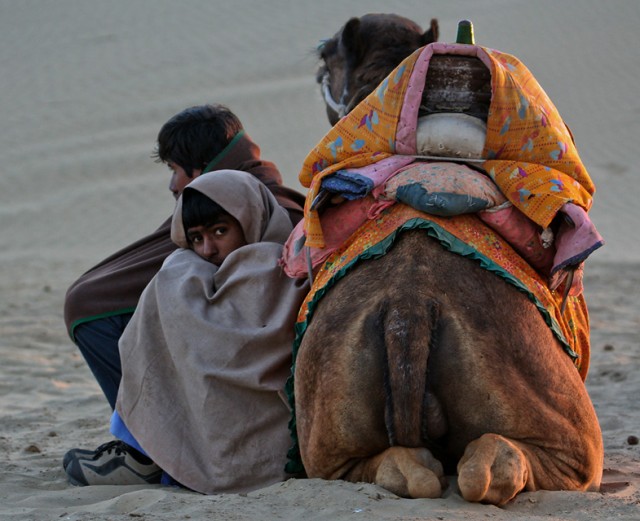
Not every work is occupational. It is common to find women using public tanks in the villages as a place for washing clothes, and use that time to catch up with all the gossip.
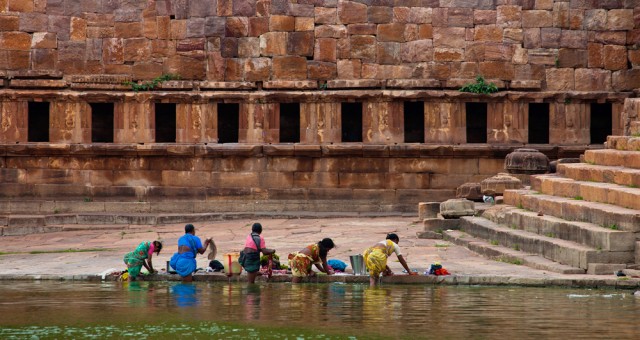
And there are some tasks, which many people assume to be a service rendered than a service that has to be paid for. This priest, like many priests across the country, probably made a living working as a priest, though people who visit the temple may never treat his availability for them as a service that needs to be compensated for.
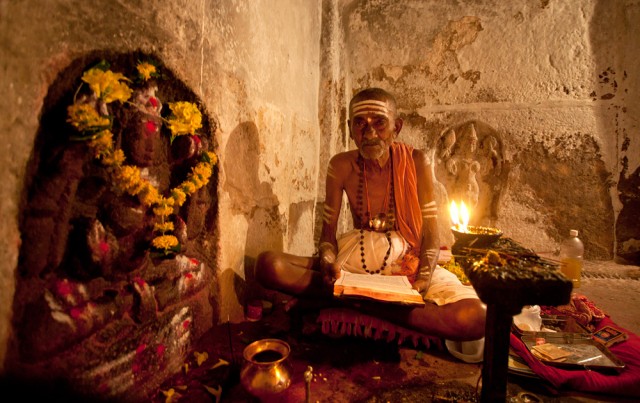
This is an unusual way to ferry tourists, seen in Keoladeo National Park in Bharatpur. Motorized vehicles are not permitted in the park, but it is a place small enough to be crisscrossed using bicycles and cycle-rickshaws. While a lot of people prefer to walk, there are a good number of people who hire cycle-rickshaws as well for transport. When someone hires a bird guide as well as rickshaw, the guide rides along with the group in his own bicycle, scouting for birds on either side of the road. Foggy weather is a common occurrence in the park area during winters, which reduces the visibility, but usually good enough for seeing birds.
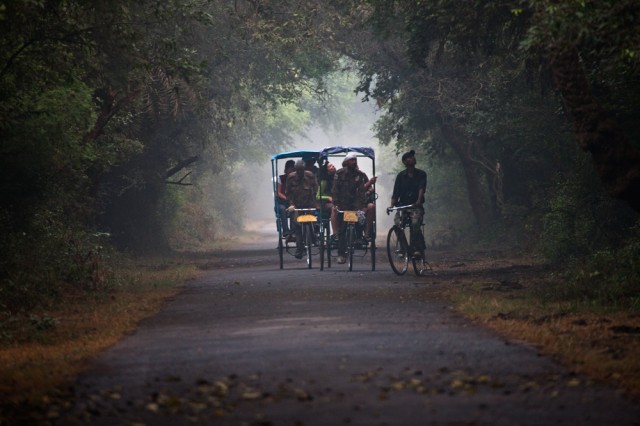
It is amazing how many different types of occupations exist in this world. They perhaps number is in tens of thousands or even higher. A quick search on the internet seemed to indicate that no one has every tried to count, although occupations may have been categorized and grouped into a countable number of genres.




















































